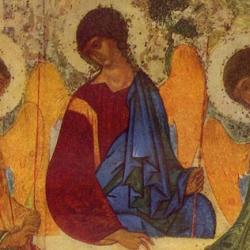Wonder Woman is the subject of a lot of solemn discussion recently, pushed into highbrow prominence by Jill Lepore’s Secret History of Wonder Woman. According to Katha Pollitt’s NYTBR review, Lepore’s book highlights the setting for the creators of the comic, William Moulton Marston, his wife Elizabeth Holloway, and a former student, Olive Byrne, who “lived in a permanent ménage à trois that produced four children—two from each woman.”
One of the unexpected contributors to the comic is Margaret Sanger, Byrne’s aunt, “whose youthful brand of romantic, socialist-pacifist feminism was formative for Marston. Sanger’s influence is perhaps the most important of the connections that Lepore teases out between Wonder Woman, the early-20th-century women’s movement, and Marston’s fascinating life and odd psyche, in which the liberation of women somehow got all mixed up with bondage and spanking.”
Bondage is a constant visual theme of the comic books, and the bondage isn’t just for kinks; it’s thematic, and it’s tied (!) to the feminism that Marston and his circle wanted to promote: “in almost every issue, [Wonder Woman] is chained or tied up. This plot staple provoked debate from the start: opponents of comic books thought it smacked of sexual fetishism (and fetishists agreed). But whatever it represented in Marston’s personal psychology, bondage was an obvious metaphor for the many ways in which women were collectively and individually constrained by law and ‘tied down’ by marriage, domesticity, children, and all the rest of it. What marvels would women achieve if only they could set themselves free? The myth of the Amazons shows how close to the surface of even the most misogynistic societies—and ancient Greece definitely qualifies—is the idea that women are at least men’s equals, and possibly even their superiors.”
The comic is worth some solemn discussion if Lepore is right to say that (in Pollitt’s words) “Wonder Woman the missing link between the first and second waves of feminism, as they’re known—that is, between the suffragist era that so inspired Marston and the 1970s women’s-liberation movement. It seems a lot to hang on a comic-book character, but she’s right that the imagery of waves and troughs overlooks the complicated ways that movements make advances even when no one’s looking—even as daily lives seem stuck and society seems to be moving backwards.”











